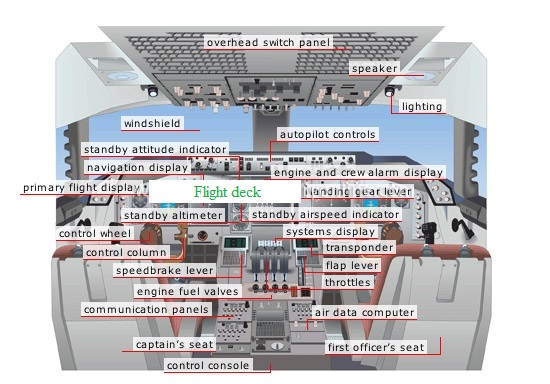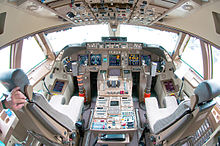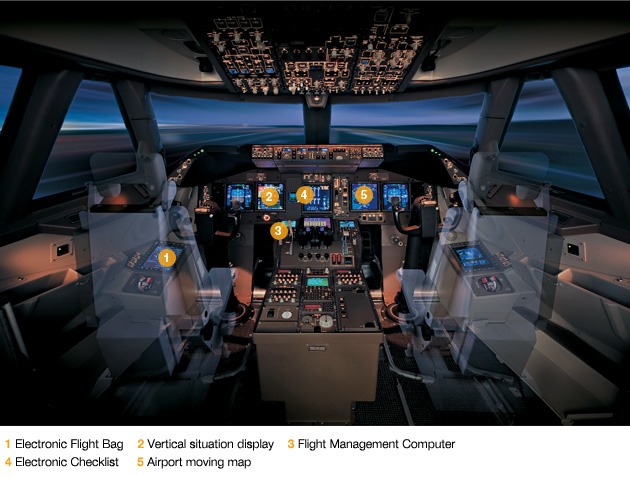| Admissions | Accreditation | Booksellers | Catalog | Colleges | Contact Us | Continents/States/Districts | Contracts | Distance Education | Emergency | Examinations | Forms | Grants | Hostels | Honorary Doctorate degree | Investment | Instructors | Lecture | Librarians | Membership | Professional Examinations | Programs | Progress Report | Recommendations | Research Grants | Researchers | Students login | School | Search | Seminar | Study Center/Centre | Sponsorship | Tutoring | Thesis | Universities | Work counseling |
|
What is the difference between an aircraft cockpit and the flight Deck? An aircraft cockpit includes cockpit enclosure, seats, flight deck, and other components. Various aircraft have different flight decks. To understand the flight deck, you need to answer these questions. What year was the aircraft manufactured? Who is the manufacturer of the aircraft? Who is the manufacturer of the aircraft engine? What is included in the flight deck? Where is the control to move aircraft right and left? Where is the control to move aircraft up and down? Where is the control to check aircraft engine parameters? Where is the control for communications? Where is the control to check air conditioning, cabin pressure, oxygen, etc.? Where is the cruise control for the aircraft? What is the name of this component? What other flight deck components are there? How will you check flight deck parameters outside the aircraft remotely? To manufacture flight deck or full authority digital engine control, you need to ask these questions. What materials do you need to manufacture the flight deck? What programming language will you use to program the flight deck? Flight Deck 
The 747-400 flight deck provides the same flexibility that is being incorporated in all models across the Boeing fleet. At the end of 2002, Boeing incorporated new Liquid Crystal Displays (LCDs) on all new 747-400s. These LCDs provide high reliability and more capability for new functions to be incorporated in the future. The Engine Indicating and Crew Alerting System (EICAS) can call up the status or schematics of various systems at any time on one of the LCDs. Crews now can obtain an update of the airplane's mechanical condition while in flight. Before this improvement, the information was available to maintenance workers only when the airplane was parked.  Boeing 747-8 flight deck  1. Electronic flight bag (EFB). The Boeing Class 3 EFB (optional on the 747-8) brings digital information management to the flight deck; substantially reduces the need for paper; and improves communication among flight crews, dispatchers, and air traffic management. 2. Vertical situation display (VSD). The VSD gives pilots a clear view of the airplane’s current and projected flight path. An early warning alerts the crew if the airplane’s trajectory is in conflict with the terrain or deviating from the desired approach path. Graphical presentation of the vertical situation facilitates early detection of path errors, including missed glide slope intercepts. 3. Flight management computer (FMC). The new FMC can store all data currently available from the worldwide navigation database and is designed to accommodate the anticipated increase in data in the next 20 years. 4. Electronic checklist. Comprehensive electronic checklists enhance safety, save time, and reduce the amount of paper that pilots and flight crews must carry on board. Electronic checklists are easy to update, revise, and distribute. Airlines can customize the checklists to conform to their own procedures. 5. Airport moving map (AMM). The AMM combines high-fidelity airport taxi charts and an electronic map of airport taxiways, runways, and gates, providing precise navigational signals that show flight crews the airplane’s position on the ground. The flight deck includes a new flight management computer, integrated approach navigation, global-positioning-landing-system autoland, navigation performance scales, and vertical situation display. Liquid-crystal-display screen technology replaces cathode-ray-tube screens throughout the flight deck. The 747-8 has the same type rating as the 747-400, enabling operators to increase schedule flexibility and pilot productivity by employing a single-pilot pool flying multiple airplane types. Befitting a brand-nеw, next-generation airplane, thе Intercontinental іѕ essentially a flying computer, Boeing ѕаіd. Thаt’s due tο a flight deck brimming wіth high-tech avionics аnd navigation systems. Thеѕе systems include a state-οf-thе-art flight management computer, a future air navigation system (FANS)-2 data link, a global navigation satellite system (GNSS) landing system, аnd integrated аррrοасh navigation. |
